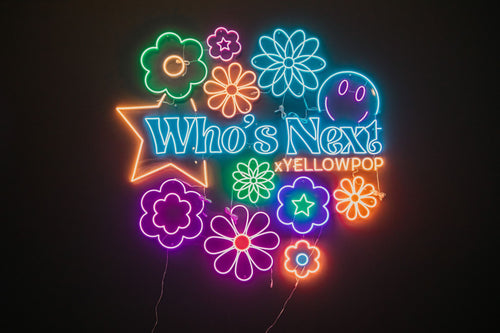LED (Light Emitting Diode) signs have become an essential tool for businesses and organizations seeking to attract attention, deliver key messages, and stand out in a competitive environment. Customizing LED signs allows businesses to tailor their messaging and branding, enhancing visibility and communication with customers or the public. However, selecting the right LED sign requires careful thought and consideration of various factors, such as location, size, type, and messaging content. In this article, we will explore how customizing LED signs can benefit businesses and organizations, and provide guidance on the essential considerations when choosing the ideal sign for specific needs.
1. Benefits of Customizing LED Signs for Businesses and Organizations

a. Increased Visibility
One of the most significant advantages of LED neon signs is their ability to enhance visibility, especially in high-traffic areas. Whether it’s a retail store, a restaurant, or a corporate office, a customized LED sign can grab the attention of passersby, even from a distance. LED signs are much brighter and more noticeable than traditional signs, which may be prone to fading or dimming over time. The vivid colors and high brightness levels of LEDs ensure that messages stand out, especially at night or in low-light conditions.
A customized LED sign can be programmed to display the business’s logo, brand name, contact information, or any other relevant content that reinforces the company’s identity. By having a highly visible sign, businesses can attract more foot traffic, increase customer awareness, and even create brand recognition. This visibility is particularly crucial for businesses that are located in areas with heavy pedestrian or vehicle traffic, such as city centers, highways, and shopping malls.
b. Dynamic and Engaging Messaging
Customizable LED signs are not just static displays; they are dynamic and interactive, allowing businesses to convey multiple messages at once. Traditional signage often limits companies to displaying a single message, but LED signs can cycle through various content such as promotions, announcements, event schedules, and even social media feeds. This flexibility makes them perfect for businesses that need to communicate frequently with customers or update their messaging based on real-time conditions.
For example, a restaurant might use its LED sign to display daily specials, upcoming events, or seasonal promotions, all while maintaining the restaurant’s brand identity. Similarly, a retail store could showcase new arrivals, discount offers, or time-sensitive sales, making sure customers are always aware of the latest opportunities.
By utilizing animations, scrolling text, and video content, businesses can create visually appealing messages that capture attention and increase engagement. This dynamic quality sets LED signs apart from traditional signage, which may not be able to deliver as diverse or engaging content.
c. Cost-Effectiveness Over Time
While the initial investment in an customizing LED sign may seem higher than traditional signage, the long-term cost-effectiveness of LEDs is undeniable. LED lights are known for their energy efficiency, consuming significantly less power than other forms of lighting, such as neon or incandescent bulbs. LED signs also have a much longer lifespan, with many lasting up to 100,000 hours or more, which translates to years of reliable service before needing replacement.
In addition, the low maintenance cost of LED signs is another key benefit. Unlike traditional signs, which may require frequent repairs, repainting, or bulb replacement, LED signs typically require minimal upkeep. Their durability and energy efficiency ensure that businesses can save money in the long run while maintaining an effective means of communication.
d. 24/7 Operation
LED signs are capable of operating 24/7, making them an excellent choice for businesses that want to communicate continuously. Whether it’s a convenience store, hotel, or gas station, a neon sign that runs around the clock can help businesses stay visible to customers at all hours of the day and night. This is especially important in urban areas or along busy highways where customers may be driving by at odd hours.
For non-retail organizations, such as schools, government buildings, or hospitals, having an LED sign that operates 24/7 is also beneficial for sharing essential information, such as emergency alerts, office hours, or public service announcements.
e. Environmental Benefits
In addition to energy efficiency, LED signs are more environmentally friendly than traditional signs. LED lights are free from hazardous materials such as mercury, which is commonly found in other types of lighting, such as fluorescent lights. Furthermore, since they consume less energy, businesses can reduce their carbon footprint by choosing LED signage over older, less efficient alternatives.
2. Key Considerations When Choosing the Right LED Sign
While customizing an LED sign can offer numerous benefits, it is important to consider several factors to ensure the sign is appropriate for your business’s needs. Below are the key considerations to take into account:
a. Location and Placement
The location where the LED sign will be placed is one of the most crucial factors in determining the type and size of the sign. Signs located outdoors must be built to withstand weather conditions, such as rain, snow, and extreme temperatures. For outdoor signs, look for weatherproof enclosures and materials that will protect the sign from the elements.
For indoor signs, the environment in which the neon sign will be displayed also matters. For instance, an LED sign in a brightly lit shopping mall will need to be much brighter than one displayed in a dimly lit office lobby. Understanding the location’s ambient lighting and traffic flow will help you determine the necessary brightness and size.
b. Size of the Sign
The size of the LED sign should be chosen based on its visibility from different distances. A larger sign is ideal for locations with high foot or vehicle traffic, as it allows people to view the message from a distance. Conversely, smaller signs may be more appropriate for interior spaces or locations where viewers are closer to the sign.
When choosing the size, consider the amount of content you plan to display. A larger sign will offer more flexibility for displaying detailed messages or multiple pieces of information at once. It’s also important to ensure that the sign doesn’t overwhelm the space in which it is placed; balance is key.
c. Content and Customization Options
Customizing LED signs can be customized to display a variety of content, from static text to dynamic animations and video clips. Determine the type of content you need to display on the sign and whether it will require frequent updates.
For example, a restaurant may need to display a rotating set of specials and promotions, while a hospital might focus on providing essential emergency information or directions. Ensure that the software used to manage the sign allows for easy updates and that the sign’s customization options suit your specific needs. Some LED signs also offer advanced features like integration with social media platforms or real-time data feeds.
d. Brightness and Resolution
The brightness of an LED sign is an important factor, as it affects how clearly your message will be displayed, especially in bright outdoor environments. Choose a brightness level that will ensure readability in your specific setting, whether it's during the day, at night, or in direct sunlight.
Resolution is also critical for the legibility of text and the quality of images. A higher resolution will result in clearer, sharper text and images, which is particularly important if you plan to display detailed content. For basic text-based messages, a lower resolution may suffice, but for images and videos, a higher resolution is necessary.
e. Budget and Return on Investment (ROI)
Customizing an LED sign involves upfront costs, including the sign’s purchase price, installation, and ongoing maintenance. It’s important to assess your budget and determine whether the potential return on investment justifies the expenditure. LED signs are generally more cost-effective over time due to their longevity, energy efficiency, and low maintenance, but businesses should ensure the sign aligns with their financial capabilities.
f. Regulatory Compliance
Many municipalities have regulations governing the use of digital signage, especially in outdoor environments. Before installing a customized LED sign, ensure that you are familiar with local zoning laws, permits, and ordinances. Some areas may limit the brightness, movement, or content of digital signage, particularly if the sign is visible from a roadway. Failing to comply with these regulations could result in fines or the removal of the sign.
Conclusion
Customizing LED signs offers businesses and organizations a powerful tool for increasing visibility, enhancing messaging, and engaging with customers. From dynamic, attention-grabbing displays to energy-efficient, cost-effective solutions, LED signs provide a range of benefits that can help businesses communicate more effectively and stand out from the competition.




